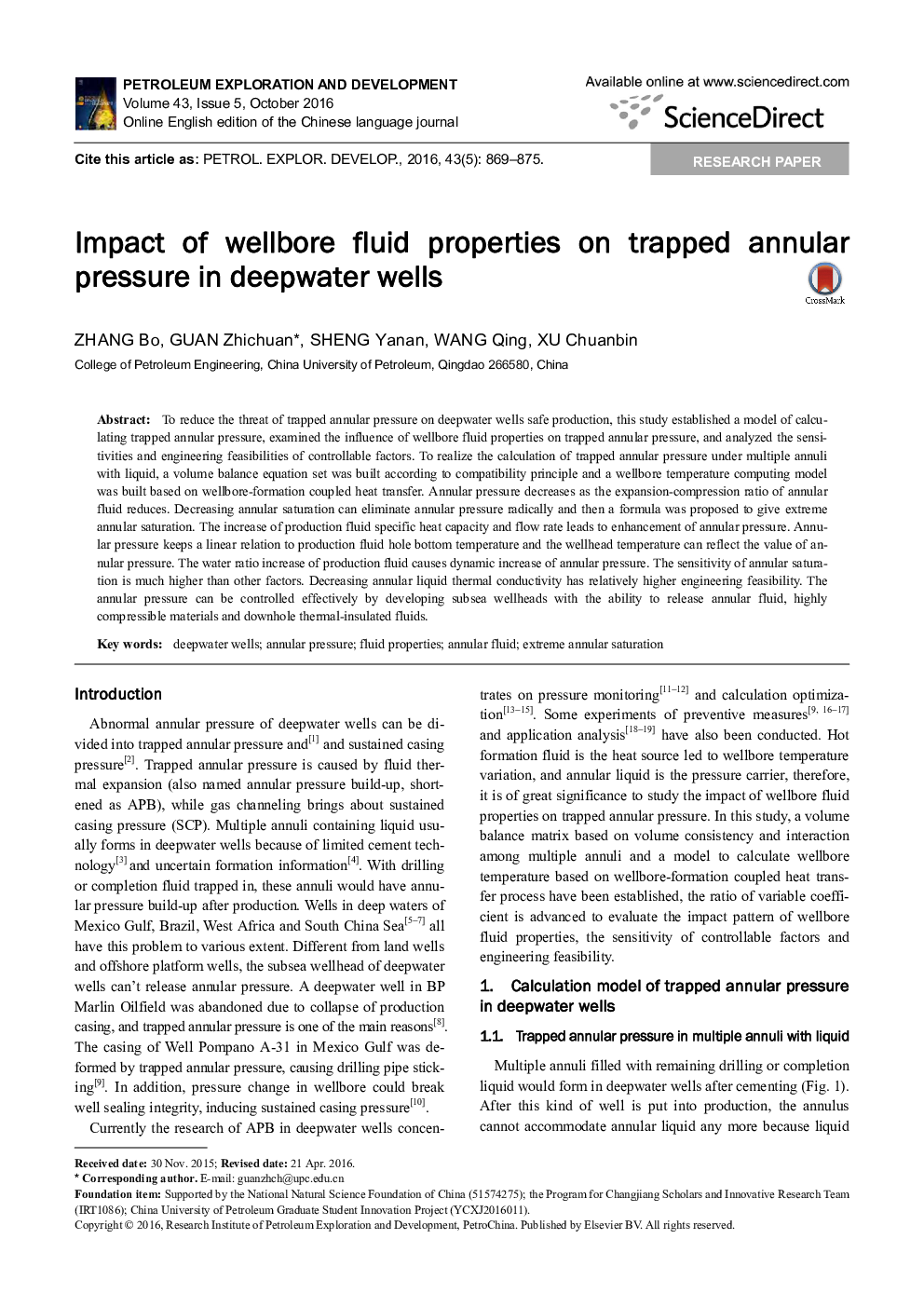| Article ID | Journal | Published Year | Pages | File Type |
|---|---|---|---|---|
| 4719891 | Petroleum Exploration and Development | 2016 | 7 Pages |
To reduce the threat of trapped annular pressure on deepwater wells safe production, this study established a model of calculating trapped annular pressure, examined the influence of wellbore fluid properties on trapped annular pressure, and analyzed the sensitivities and engineering feasibilities of controllable factors. To realize the calculation of trapped annular pressure under multiple annuli with liquid, a volume balance equation set was built according to compatibility principle and a wellbore temperature computing model was built based on wellbore-formation coupled heat transfer. Annular pressure decreases as the expansion-compression ratio of annular fluid reduces. Decreasing annular saturation can eliminate annular pressure radically and then a formula was proposed to give extreme annular saturation. The increase of production fluid specific heat capacity and flow rate leads to enhancement of annular pressure. Annular pressure keeps a linear relation to production fluid hole bottom temperature and the wellhead temperature can reflect the value of annular pressure. The water ratio increase of production fluid causes dynamic increase of annular pressure. The sensitivity of annular saturation is much higher than other factors. Decreasing annular liquid thermal conductivity has relatively higher engineering feasibility. The annular pressure can be controlled effectively by developing subsea wellheads with the ability to release annular fluid, highly compressible materials and downhole thermal-insulated fluids.
